 |
 |
| |
|
| |
|
|
| |
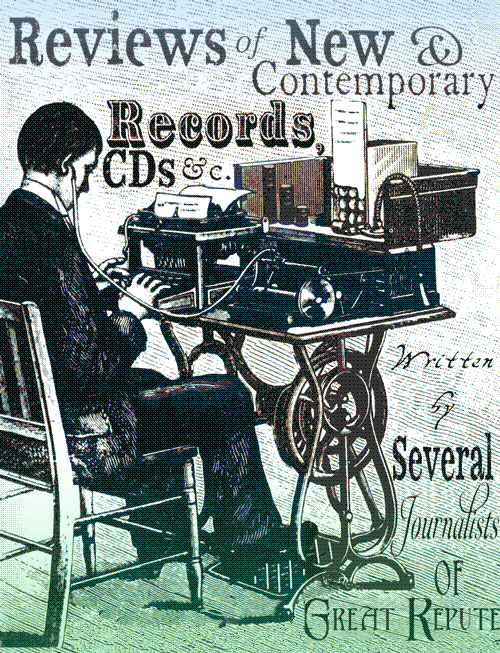 |
|
| = June 2013 = |
|
|
| The Bevis Frond |
| Strange Fish - V/A |
| Arborea |
| The Sharpest |
| Galaxie 500 book |
| Lamp of the Universe |
| Dark Britannica III comp |
| Red Shoes |
| The Telstar Sound Drone |
| Dead Sea Apes & Black Tempest |
| The Purrs |
| Edward Ka-Spel |
| |
| |
| |
| |
| |
| |
| |
| |
| |
| |
| |
| |
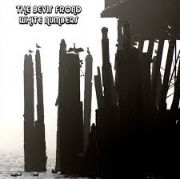
Home |
THE BEVIS FROND - WHITE NUMBERS
(3 x LP from Woronzow Records)
It's been a long wait, but a worthwhile one. I had a sneaking suspicion as soon as I saw the cover - monochrome front and sepia tone rear, not unlike the stylism of 'New River Head' - that this was going to be something really rather special, and special it is.
'Begone' is comfort food for the starved Frond fan right from the outset, a song which could've been an outtake from almost any one of your favourite Bevis Frond albums. All the key elements are in place: it's lyrically challenging, wig-out friendly distinctively Frondian rawk with a guitar solo to die for. Along with the punchy 'She's Just Like You' which crops up a couple of songs later, 'I'm the Only One' over on Side 3 and Side 4's 'Major Crime' and 'The Hook', I can well imagine this becoming a staple of the band's live set for a long, long while to come.
The Stonesian ‘Beautiful to Me’ is lyrically brilliant (‘It’s the excrement floating on the sea / makes it beautiful to me’ is just one of several captivating couplets); and if that contained a nod in the direction of the Stones, then 'Tree Line' shades the Beatles, yet as always, with pure undiluted essence of Frond coursing through its veins, making this one of the most memorable and catchy - dare I say it, radio friendly - songs on the album. The stand-out cut for me on side 2 though has to be the haunting, evanescent ‘High Wind Crow’, which features one of the most sublime guitar lines this side of Kurihara’s Ghost it’s yet been my ears’ pleasure to behold. The song stops me dead in my tracks every time I hear it.
'Neverwas' which closes out Side 2 is a smouldering gem, with a guitar tone that puts me in mind of Groundhogs. Side 3's 'Just Cause (Wins Wars)', like 'She's Just Like You' before it, reminds me a little of the Wipers; again, this is no bad thing. Side 3 is notable though for containing no less than three potential classic Frond songs, 'Dead Weight' and the similarly structured 'It's Coming On', and best of all the brilliant 'I'm the Only One'.
The fourth side opens with the sitar-driven 'Alta' (with it's fabulous opening line 'There's a hard shell and a gruff demeanour', inimitably Nick Saloman both in verse and delivery); bounces through 'Major Crime' which just longs for a great guitar solo, and delivers an absolutely brilliant one - wait a few minutes though and an even better one bursts its way through 'Dream It' - before landing on the pick of the side, 'The Hook', which is as good a way to close an album as the Frond has ever come up with, leaving the listener yearning for more.
And more there is! Two sides and 42 minutes or so of absolutely gorgeous instrumental jamming and soloing from the band, which is (sorry, I should have mentioned this earlier - I have a feeling I'm probably preaching to the converted here though in any case) Nick Saloman himself on guitars and keyboards, Paul Simmons on guitars, Ade Shaw on bass, and Dave Pearce (not the Flying Saucer Attack guy) on drums.
With three LPs and 25 choice cuts to pick from, it's next to impossible to name favourites - this is a trip to be enjoyed at leisure rather than a race in any case. It's pretty hard to argue the greatness of 'Cruel World', 'She's Just Like You' and 'I'm the Only One' though; and I have to confess, I'm also partial to the 'Homemade Traditional Electric Jam' as well, which has been receiving an inordinate amount of airplay hereabouts.
One of the Bevis Frond's very best - and that's saying something! (Phil McMullen) |
| |
|
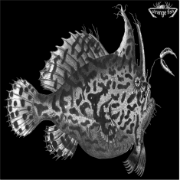
Home |
V/A - STRANGE FISH ONE – FOUR (plus bonus CD)
(Vinyl from Fruits de Mer
http://www.fruitsdemerrecords.com/strange%20fish.html )
The inestimably fine folk at Fruits de Mer have come up trumps yet again, this time with a five lp set of almost entirely vocal and often percussion free oddness that is a celebration of psychedelic, kosmische and ambient (electronic and acoustic) featuring an impressive international cast, some of who will be familiar to us and others maybe not.
The first of these comprises three lengthy workouts, two courtesy of Craig Padilla and an elongated piece from West Coast (of Wales) wizards Sendelica from which the Strange Fish series takes its name – or maybe it’s the other way round (which came first the cod or the roe?). I’m fond of both acts and am quite taken with Padilla’s contributions here - “Full Moon World” and “Secret Language” - which, back in the day might have been termed New Age Music, but which spans the spectrum from Tangerine Dream and “New Age of Earth”-era Ashra to the chill out zone. Sendelica, who are set to be one of the headliners at Kozfest later this summer, explore some of the strangest and least visited corners of the cosmos on their epic and inspirational 24 minute title track. Depending on your mood of view it is either an excellent aid to relaxation or pretty decent background music by which to write reviews, but may be a tad over-long and noodlesome for general tastes.
Volume 2 is the first of two double slabs in the vinyl set is quite wonderfully v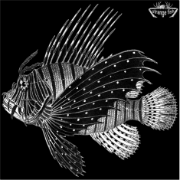 aried. Sides 1 and 2 are what could be considered to the “rockers” of the whole pack, although I use the term advisedly. It features the Near Eastern tinged groovesomeness of Vespero’s “Red Machine”, the mellow saxophone notes and latterly some real drumming of Organic is Orgasmic’s “At Dawn of Men” and Sendelica’s Floydian “80% Neon Bridge of Sighs” as well as more conventional fare of Temple Music and The Grand Astoria. On the second slab, Cat Frequency manages to combine the best of both galaxies - some decent rock guitar wailing atop analogue sounding synths, while Julie’s Haircut (Italy) have to be one of the finds of the series. Melodic and rhythmic at the same time, imagine the Doors trying our Riders on the Storm with Neu as he production team and you’ve a reasonable idea of what “Tarazed” sound like. Their second offering “Asioli” fuses classical piano with Euro-Jazz which of course gives us the P word in music and is one of the occasional nods in a progressive rock direction that can be found in this collection. An insistent bass and understated percussion helps keep proceedings nicely propelled and interesting. The final side is another of those 24 minute ultrathons, courtesy of Mechanik from Spain, an unashamedly krautrock construct from the little-known motorik metropolis of Madrid, a side-long acid jam that offers enough variety and suspense to keep one’s attention without descending into cliché or really pulling out all the stops. aried. Sides 1 and 2 are what could be considered to the “rockers” of the whole pack, although I use the term advisedly. It features the Near Eastern tinged groovesomeness of Vespero’s “Red Machine”, the mellow saxophone notes and latterly some real drumming of Organic is Orgasmic’s “At Dawn of Men” and Sendelica’s Floydian “80% Neon Bridge of Sighs” as well as more conventional fare of Temple Music and The Grand Astoria. On the second slab, Cat Frequency manages to combine the best of both galaxies - some decent rock guitar wailing atop analogue sounding synths, while Julie’s Haircut (Italy) have to be one of the finds of the series. Melodic and rhythmic at the same time, imagine the Doors trying our Riders on the Storm with Neu as he production team and you’ve a reasonable idea of what “Tarazed” sound like. Their second offering “Asioli” fuses classical piano with Euro-Jazz which of course gives us the P word in music and is one of the occasional nods in a progressive rock direction that can be found in this collection. An insistent bass and understated percussion helps keep proceedings nicely propelled and interesting. The final side is another of those 24 minute ultrathons, courtesy of Mechanik from Spain, an unashamedly krautrock construct from the little-known motorik metropolis of Madrid, a side-long acid jam that offers enough variety and suspense to keep one’s attention without descending into cliché or really pulling out all the stops.
Another doubler, 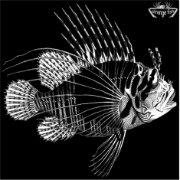 Palace of Swords kick things off on Volume 3 with the wonderfully atmospheric “Live at the Aberdeen Witch Trials 1597” (which must also bag the best title accolade) The ever improving Earthling Society provide the most varied offering, courtesy of “The Vampire’s Kiss”, three-piece-suite spanning 13 minutes. “Theme from a Vampire’s Kiss” works well as a baroque western theme, particularly one scored by the Shadows with Dr Who’s Tardis providing the mixing desk while “The Dream” harnesses the rather incorporeal and disjointed sound of Board of Canada and latter-day Broadcast.“Morning Glory” is most notable for its exquisite acoustic second half, featuring some tasteful guitar and flute. Palace of Swords kick things off on Volume 3 with the wonderfully atmospheric “Live at the Aberdeen Witch Trials 1597” (which must also bag the best title accolade) The ever improving Earthling Society provide the most varied offering, courtesy of “The Vampire’s Kiss”, three-piece-suite spanning 13 minutes. “Theme from a Vampire’s Kiss” works well as a baroque western theme, particularly one scored by the Shadows with Dr Who’s Tardis providing the mixing desk while “The Dream” harnesses the rather incorporeal and disjointed sound of Board of Canada and latter-day Broadcast.“Morning Glory” is most notable for its exquisite acoustic second half, featuring some tasteful guitar and flute.
Dead Pylons offer up three of their own, the best of which is the bass-driven groove of “Osiris” which comes close to “Towers of Dub” territory on occasion and which serves to get the old head nodding and foot tapping without the need to overdo it. “Dream Cargos also deserves mention being reminiscent in a good way of Phil Manley’s “Life Coach” from a couple of years back
Golden Cake Company can reasonably lay claim to the title of House Band of Planet Terrascope, featuring as it does the remarkable talents of two of our writing team, Messrs Simon Lewis and Steve Palmer and the no-less gifted Mr Geoff Puplett. “Thrum Mystique” features layers of guitar and synthesizer bubble and fizz in a manner that owes much to Rainbow Dome Music and the pioneering spirit of early ambient space rock, it’s pleasing analogue feel being both soothing and uplifting, this is highly accomplished and enjoyable electric music for the mind and body.
GCC commence play on the second platter with “Arthurian” which showcases to good effect the band’s trademark space drips. Vert-x’s rather workmanlike cosmic boogie, served up in three rather stodgy slices, marks time before we are reintroduced to more tasteful and imaginative fare on Side 4 courtesy of Black Tempest and its 13-plus minute “Energy of Stars”. The fact that it is one of about half a dozen cuts across the five albums that have made it on to this month’s i-pod compilation is a personal testimony to just how good this is. I’m pleased to report that Black Tempest will be playing a certain Woolf Music event in the beautiful and tranquil heart of Wiltshire this summer (details to be found on this site promising much goodness at such an incredibly reasonable price you’d think the organisers were cutting their own throats). Frobisher Neck brings up the rear in warm and evocative style, while Zenith also served with honour.
As sure as night follows day so four follows three. This single album features a more organic sound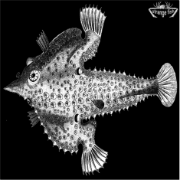 courtesy of a considerable input of acoustic guitar, notably on Cat Frequency’s “Dreaming of a Wooden Fish” (aficionados of Basho and Rose are unlikely to be disappointed particularly of the first couple of minutes worth) and James McKeown who contributes four short pieces that prove delightfully undemanding as far as the listener is concerned and the best of which, by the thickness of a blue rizla paper, are “Avebury” and “Euclid Dreaming”. What strikes me most about “Chinese Horoscope” by Organic is Orgasmic, other than its faintly funky tempo, is that the synth playing is rather reminiscent of Phil Ryan during his stints with Man and the Neutrons – at mention of which an Esteemed Editor is sure to stir and take interest. “Lifeless Void” is the other O is O contribution and sounds like Church of Hawkwind overdubbed on top of some out-takes from Meddle-era Floyd. Zenith:Unto the Stars’s “Juno Quartet” is a short and blissful slice of space ambience and presages nicely the splendidly atmospheric and glacial “Con Bala” by the same artists (who incidentally formed the band at the Barney Bubbles Memorial Concert put together by Nik Turner at the 229 Club in London a few years back. An unlikely pub quiz question, I’ll grant you, but you never know). The Vox Humana, Temple Music and the Bordellos also deserve mention for their gentle and relaxing ambient and mostly acoustic endeavours (the latter sounding like a chamber quartet’s rendition of “Duchess” by the Stranglers. Or perhaps I just need a lie down). courtesy of a considerable input of acoustic guitar, notably on Cat Frequency’s “Dreaming of a Wooden Fish” (aficionados of Basho and Rose are unlikely to be disappointed particularly of the first couple of minutes worth) and James McKeown who contributes four short pieces that prove delightfully undemanding as far as the listener is concerned and the best of which, by the thickness of a blue rizla paper, are “Avebury” and “Euclid Dreaming”. What strikes me most about “Chinese Horoscope” by Organic is Orgasmic, other than its faintly funky tempo, is that the synth playing is rather reminiscent of Phil Ryan during his stints with Man and the Neutrons – at mention of which an Esteemed Editor is sure to stir and take interest. “Lifeless Void” is the other O is O contribution and sounds like Church of Hawkwind overdubbed on top of some out-takes from Meddle-era Floyd. Zenith:Unto the Stars’s “Juno Quartet” is a short and blissful slice of space ambience and presages nicely the splendidly atmospheric and glacial “Con Bala” by the same artists (who incidentally formed the band at the Barney Bubbles Memorial Concert put together by Nik Turner at the 229 Club in London a few years back. An unlikely pub quiz question, I’ll grant you, but you never know). The Vox Humana, Temple Music and the Bordellos also deserve mention for their gentle and relaxing ambient and mostly acoustic endeavours (the latter sounding like a chamber quartet’s rendition of “Duchess” by the Stranglers. Or perhaps I just need a lie down).
The fifth and final compilation is a bonus CD exclusively for available for those who purchase the complete vinyl set of volumes 1 to 4. How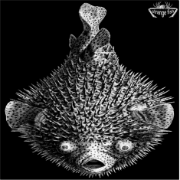 ever any suspicion that this is just filler – the sprat to catch the bigger, juicier mackerel – is soon dispelled. In fact I would go as far as to say that this is my favourite collection in the series. From the drone-like “The Introduction” by Elevation and the peerless “Floating with...” by the Golden Cake Company through to rockier heights courtesy of Jay Tausig’s lengthy “Shortwave” and Oceanfire’s searing “Elevations” with its Dave Brock riffs and all points of delight in between (The Cream People, Purple Rock Trip and the mysterious and beguiling Mademoiselle Marquee) this is probably the most rounded and fulfilling seventy-odd (in some cases very odd) minutes of compiled music I’ve heard in quite a while. Honestly, probe as I might there is no let up in quality, it simply doesn’t miss a beat – whether one exists or not. There are also two bonus tracks thrown in for good measure, Beau’s “Rainbow Jam Theme” and “Der Flammenwerfer” by Amazing Sounds of D B Turi both of which enhance no end the cause of the freebie extra. ever any suspicion that this is just filler – the sprat to catch the bigger, juicier mackerel – is soon dispelled. In fact I would go as far as to say that this is my favourite collection in the series. From the drone-like “The Introduction” by Elevation and the peerless “Floating with...” by the Golden Cake Company through to rockier heights courtesy of Jay Tausig’s lengthy “Shortwave” and Oceanfire’s searing “Elevations” with its Dave Brock riffs and all points of delight in between (The Cream People, Purple Rock Trip and the mysterious and beguiling Mademoiselle Marquee) this is probably the most rounded and fulfilling seventy-odd (in some cases very odd) minutes of compiled music I’ve heard in quite a while. Honestly, probe as I might there is no let up in quality, it simply doesn’t miss a beat – whether one exists or not. There are also two bonus tracks thrown in for good measure, Beau’s “Rainbow Jam Theme” and “Der Flammenwerfer” by Amazing Sounds of D B Turi both of which enhance no end the cause of the freebie extra.
And so here we are. There’s so much to love and so little to dislike about this broad canvas of typical eccentricity from one of our most cherished indie labels and something for everyone. So whether your penchant is for ambient electronic music, extended jams, blissed out acoustica or four to the floor boogie with added frills the get yourself down to the sea and check this out as there is certain to be a limited run of these four compilation LPs which, if history is anything to go by, are bound to sell out quickly. Besides, you’re bound to kick yourselves if you should miss that killer, bonus CD.
Strange Fish One to Four will be available on (coloured) vinyl and are set for a June 2013 release
( Ian Fraser ) |
| |
|
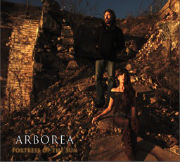
Home |
ARBOREA - FORTRESS OF THE SUN
(CD/LP from www.espdisk.com)
Over five albums Buck and Shanti Curran have honed and crystallised their art, searching for purity and beauty, something they have achieved on this exquisite collection, every song a twinkling gem that is the very essence of Arborea.
As always, it is the haunting beguiling voice of Shanti that first draws you in, but you soon realise that the music behind the voice is as equally important, the arrangements obviously created with an eye/ear for detail, allowing the songs to shine.
Opening with “Pale Horse Phantasm”, the album grabs you immediately, a soft melody and drifting guitar that float over you, the addition of some sparse drums adding energy to the tune, whilst the lyrics hint at something darker just beneath the surface. This lyrical duality continues on “Daughter of Man”, another gentle swirl of a song, the understated music allowing the vocal delivery to shine out, the song's gentleness underpinned with tension and a trembling unease.
Releasing that tension with hope and beauty, “After the Flood Only Love Remains” is a simple and effective tune, the sound of the sun breaking free from the clouds, its repetition giving the tune a hypnotic quality. Much stranger is “Ghost”, a whispered poem, set to banjo and harmonium, the addition of beautiful harmony vocals giving the piece the feel of a misty woodland walk, a hint of magic in the air.
Featuring the vocals of Buck, “Rider” is a slow burning piece of mountain music, almost traditional in its style, yet undeniably Arborea, the song one of my favourites. Based around a traditional melody (which sounds very similar to “Scarborough Fair”), “When I was on Horseback” is another delightful track, the sound of a hammered dulcimer adding a ghostly wistfulness that suits the tale of a civil war cavalry officer.
Showcasing his excellent guitar playing, “Rua Das Aldas” is an instrumental piece that is far too short, almost over before it has begun, the track leading into an arrangement of “Cherry Tree Carol”, another traditional tune given the once over and now sounding like an Arborea original.
Clocking in at under 35 minutes, although there a three bonus track, all different mixes/versions of tunes on the album, this collection gets to the very heart of this remarkable duo, the music intense, unique and very personal to the musicians, a collection that will get better with time, as all their albums have and their best yet. (Simon Lewis) |
| |
|

Home |
THE SHARPEST - TOPHET CHASM
(CD http://thesharpestrock.bandcamp.com/album/tophet-chasm)
The Sharpest’s debut full-length “Tophet Chasm” is a unique piece of art. For those unfamiliar with the Massachusetts three-piece, comprised of vocalist/guitarist Vas, bassist Adam, and drummer Matt, they play a kind of experimental or psychedelic math rock. Stylistically, “Tophet Chasm” has erratic song structure, with repetition working in unexpected ways beyond typical rock (and math rock) formulae.
Beginning stealthily with a playful bass line, the album’s 8-minute opener “Sunrise2” almost immediately launches into a series of complex and jarring rhythms with a slithering guitar lead alternating with wispy, delay-drenched, haunting vocals that are distinct while the words are almost entirely indecipherable. This track is definitely a stand-out; the collaged-sounding drumming does a good job of punctuating the fractured rhythms of certain parts (4:22 and on, for example). The end of this track establishes one of the many things the Sharpest do well: repetition, with deterioration of the rhythm and detail, similar to how tape loops decay.
The shortest full-band track, “Gay Song,” might be the simplest on the album, but it is certainly the most infectious. The teasing guitar refrain will get stuck in your head, but will be difficult to sing, with untranslatable catchiness that is characteristic of this album. This song’s vocals contrast with the instrumental refrains, to the effect of coloring the mood, which at first glance is upbeat, with something else, something unsettling.
Another of the long tracks, “2nd Brother,” begins very minimally, with the vocal refrain of “missed baseball games / not doing anything.” The drums come in subtly, with a really careful touch, until the track suddenly breaks into a heavy part that sounds almost mournful. This part is eventually morphed into a sort of playful (yet still heavy) 5/4 phrase. After a very noisy breakdown followed by soft, intentionally noncommittal guitar playing, this part is reprised for the finale, with the band playing this 5/4 phrase but shaving more off of the beginning each time until, at the last time through, it is just one hit to end the song abruptly.
A perfect piece to end the album, “Desert” is a lopsided, beautiful track that goes directly into a “verse” (though it is not repeated) with a flowing rhythm and ghostlike vocals. Next, the band launches into one of the catchiest choruses (?) I have ever heard, while still remaining oblique and true to their sound. The lyrics are minimal and beautiful: “you see / opportunity / in these tessellating dunes / i miss you.” Something about the vocals seems to be simultaneously underneath the instrumentals, driving them, and somewhere far above them (see: 1:10 —1:30). After a very desert-like instrumental section with particularly nuanced guitar playing, the band reprises the chorus to end the song with their characteristic repetition of and deterioration of the refrain. This track is a great example of the band’s ability to make some beautifully abrasive sounds.
“Tophet Chasm” gives the listener the sense that it was crafted extremely carefully, but is weird as hell, with a number of tracks breaking down in the middle only to come back, with some twist on the melody or rhythm. This album in many ways juxtaposes different elements of music: The Sharpest perfectly blend an aspect of strangeness with really fun, weirdly catchy guitar and vocal melodies. In addition, these melodies (especially the vocals), which may often defy the listener’s normal sense of melody, are nevertheless very urgent and often heartbreaking.
As far as the production of this album, it’s really jagged, which actually works very well with the band’s sound. All of the slides and angular guitar melodies (like the first part in “Sunrise2” or the part beginning around 2:40 in “Rim All Day”) benefit from this kind of production, as well as the drums, which seem to pop a bit more than they might otherwise. One thing about this album: headphones are definitely, definitely recommended. The album may sound a bit thin because of the production, but headphones round it out. Also, headphones will help pick up a lot more of the intricacies, such as the quieter bass parts or very fleeting guitar flourishes.
Because of the vocal style, many of the lyrics are indecipherable. The listener can certainly interpret and enjoy the album while treating the vocals solely as an instrument (i.e., disregarding the lyrics). That being said, if one is able to get the lyrics (most likely by contacting the band), the album totally opens up in a new way. The lyrics on this album are stellar and would take another review to properly get into. They are subtle, poetic, and fitting (with the vocal style).
With “Tophet Chasm,” The Sharpest have truly defied easy categorization. In this reviewer’s opinion, the album works as a very listenable mixture of noise, math rock, and psychedelic music that remains peculiar to the band.
(Bryan Counter) |
| |
|
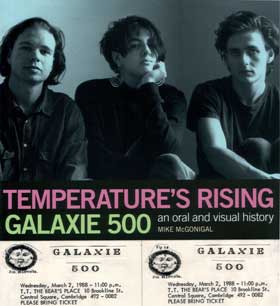
Home |
MIKE McGONICAL - GALAXIE 500 – TEMPERATURE IS RISING
(Book 192 pp Yeti Publishing ISBN 978-1-891241-56-7 )
Their music, of course, speaks for it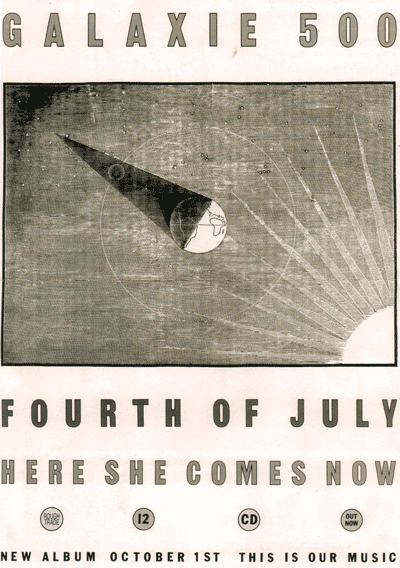 self. Theirs was one of the most distinctive sounds of the late 80s, often imitated but never equalled; and the band remains one of the underground’s most spoken of (in hushed tones, but of course) and revered acts of all time. self. Theirs was one of the most distinctive sounds of the late 80s, often imitated but never equalled; and the band remains one of the underground’s most spoken of (in hushed tones, but of course) and revered acts of all time.
This deluxe coffee-table book is superficially about Galaxie 500’s music, insofar as it charts (ha!) their career song-by-song from beginning to end, but more than that: it’s about the band’s style. About their very being.
Fortunately the band’s members (Naomi, primarily) have retained every last snippet of ephemera, from the carefully typeset hand-cut layout of their first cassette (summer 1987) to the set-list from a date on their final tour (spring 1991), and it makes for a fascinating as well as breathtakingly beautiful journey, Naomi’s eye for design, typography and layout are second to none to my mind – not for nothing did I jump at the chance to have her design the layout and typography for the very first Terrasto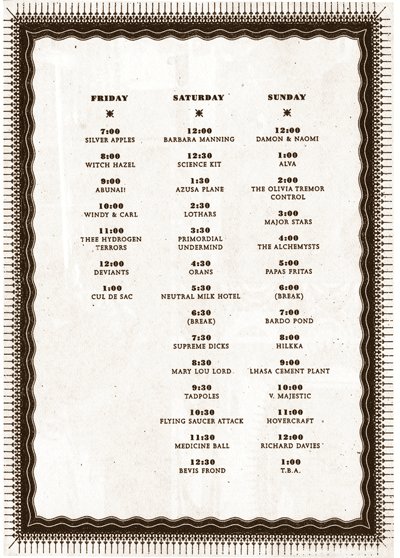 ck festival, for example. ck festival, for example.
Subtitled “an oral and visual history”, this is probably more one for the fans rather than the dedicated musicology student. If you’re looking for the Galaxie 500 equivalent of Mark Lewishon’s ‘Beatles Recording Sessions’ then it’s fair to say this probably isn’t the book for you. And neither to my mind should it be. Quite frankly I’m not really that interested at this remove at what time of day a song was recorded and on what equipment or at which settings. This is simply an utterly gorgeous, unparalleled insight into the makings of a very special band – and I love it for that.
(Phil McMullen) |
| |
|
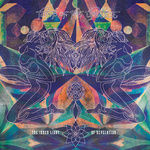
Home |
LAMP OF THE UNIVERSE – TRANSCENDENCE
(CD from http://lampoftheuniverse.bandcamp.com/ )
Psychedelic and burning as bright as a flaming comet, the music of Lamp of the Universe flies between the planets of Spacemen 3 and Sundial, leaving behind a drifting tail of cosmic eastern dust that seeps into your skin to leave you blissed and smiling.
Opening with the shimmering, fuzzed guitar riff of “Pantheist”, the album wastes no time in hoisting its freak flag, backward guitar, eastern percussion and mellotron adding to the acidic ambience whilst the guitar playing of Craig Williamson (the man behind all this wonder) soars and dances throughout. Having entered the portal, “Creation of Light” slows it down, sitar and flute intertwining to create a late sixties space-out, think of Quintessence meeting I.S.B at Middle Earth just as the sun rises. As the track moves on, an acoustic guitar riff gives it the feel of early Hawkwind in mellow mode, reminding me of “Children of the Sun” from the classic “In Search of Space” LP.
Moving on, the title track sits perfectly between the opening pair, a hypnotic drum pattern giving the song energy and purpose, whilst all around sound's drift in and out, the mellotron and sitar sounding mighty fine together, the warm production giving the whole album a delightful feel far from the clinical coldness that digital can produce.
Over the whole of this album, there is a wonderful ebb and flow, the feeling of being close to nature, sand between your toes, a warm breeze blowing, each track a being a part of a greater whole. Which, of course, may sound like hippy bollocks ! But there is such a warm and personal atmosphere to the collection that it really does make you feel happier, warmer and quite possibly, stoned. One listen to the beautiful “The Sign of Love” should convince you of this, especially when the flute floats across the room.
Possibly my favourite track, “Samsara Born” is a flowing cloak of lysergic energy that wraps itself around you, fragmenting your dreams and slowing down time. As always, the guitar playing shines out, simple and beguiling, each note there for a reason, the whole a piece of quiet perfection that is perfectly formed.
To finish, “Beyond the Material World” is a slice of Space-Rock with twisted guitar, all manner of effects and a psychedelic kitchen sink thrown at it, the track moving into Amon Duul, Ashra Territory and rounding off a fantastic album in style.
If I get around to ever writing a “best of 2013” list, then I am willing to bet that this will be in there, my favourite album of the year so far.
Whilst the download is available now, the CD is not out until August, time to save your pennies. (Simon Lewis) |
| |
|
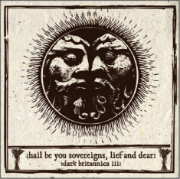
Home
|
V/A – SHALL BE YOU SOVEREIGNS, LIEF AND DEAR: DARK BRITANNICA III
(2xCD from Coldspring www.colspring.co.uk )
Rejoice, then, as we bid welcome to this latest instalment in the so-far admirable Dark Britannica series. As you would expect the overall theme is pretty shadowy and mysterious be it in sound, subject matter or, frequently, both. Comprising mostly new or at least recent recordings, some cut exclusively for this collection, III doesn’t disappoint for the most part, with styles ranging from David Kidson’s richly sounding plainsongs about the Green Man and a quite bizarre treatise by Andrew King on fairies and little folk (“Of The Subterranean Inhabitants”) through to spine tingling vocal harmonisation with minimal accompaniment (the brilliant and instantly recognisable Rapunzel and Sedayne masquerading as Venereum Arvum), weird and mournful drone (Xenis Emputae Travelling Band), and some endearingly old school folk rock from Mary Jane (suggesting that somewhere in deepest Hampshire it is forever 1970 and delightfully so).
In between there is a nice twist on the poor murdered woman theme (“The Lonely Willow Tree”), Earthling Society show their versatility with a couple of quite impeccable contributions, particularly the acid folk retro-classic “An Elf Knight’s Lament”, while Galley Beggar take the honours on disc 1, and possibly the accolade of supreme champion, with “Sun God” – a sort of CSN meet Led Zeppelin’s “Battle of Evermore”. Hills Have Riffs, David Briggs’ collaboration with cellist Alexander Tucker and whose EP “The Countryside Has Escaped” was favourably reviewed here a couple of years back, come up trumps with “Drugged Shepherd”, which sounds much like you might expect given the title and is well-suited to Briggs’ un-dead baritone and psychedelic noodlings. Thornland impress with their “Ancient Trees and Fractured Spine” – imagine if you will black monks covering the works of Forest by way of an incidental score to 1980s TV series “Robin of Sherwood”, while there is a reassuringly unhealthy dose of the macabre courtesy of Steve Tyler (surely not) and Andy Clarke’s “My Lady’s Coach” and The Transmutations’ “The Bramble Briar”. For nature raw in tooth and claw listen no further than Heed The Thunder’s “Easter Tree” (it’s worth noting that as a frequently neo-pagan musical offering the subject of trees crop up frequently in both artist and song titles) which evokes both Martin Carthy and June Tabor. Melodically pleasing, too, is the somewhat fey sounding “On Ridgeway Fields” by Rowan Amber Mill apparently inspired by frequent visits to the White Horse of Uffington and more than one children’s TV series from the 1970s (and they don’t make them like they used to, you know).
This being the third in a series of Dark Britannica compilations and spread over 30 tracks and more than one and three-quarter hours of music, there is the inevitable though thankfully just occasional dip in quality. The purists in our midst may well scoff and indeed even the sullied among us will occasionally need to suspend our disbelief but hang ‘em all and hang ‘em high – if not from a lonely willow tree then how about some gnarled forbidding oak or dark elder? This is, as we used to say, the gear, with something for pretty much everyone on the Terrascopic continuum and indeed lovers of both time-honoured and left-field modern variants of the folk tradition. Roll on Volume IV says I.
(Ian Fraser) |
| |
|
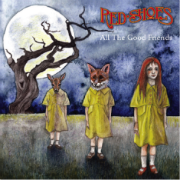
Home |
RED SHOES – ALL THE GOOD FRIENDS
(CD/Download from Cedarwood Records http://www.redshoes-music.com/shop.html )
Based around Birmingham couple Carolyn and Mark Evans, Red Shoes takes on something of a super group status thanks to the contribution here of several venerable names of folk and popular music including Daves Pegg and Swarbrick, latter day Fairport Convention members Chris Leslie and Ric Sanders and Move/ELO legend Bev Bevan.
Carolyn Evans has a powerful and technically proficient voice, although it lacks its own distinctiveness and it is one that is perhaps easier to admire rather than love. She acquits herself admirably enough, particularly on the stand out tracks such as the opening “Red Coat Ride” with its loping “Matty Groves” beat and the Sandy Denny sounding “Sunday Afternoon” and “River Rea”. “If This is Life” with Mark taking lead vocals nods stylistically if not quite in execution in the direction of Neil Young (and not just because of the “comes a time” line) and there is an interesting and rather effective take on “Blackberry Way” by the Move, sang as a lament to a plaintive backdrop of guitar, bass and violin. It could easily sound twee or mawkish but to their credit they even manage to add something to the very fine original.
Elsewhere while everything sounds very accomplished there is a perceptible drift towards the cats’ eyes and white lines. And here’s the rub. There is something nagging unfulfilling about All The Good Friends which has nothing to do with the quality of musicianship, arrangements or for want of endeavour. It’s simply that this kind of “folk” music has become safe to the point of almost being risk averse – fine perhaps when broadcast live from the Union Chapel on some Friday night BBC4 showcase or from the increasingly glitzy Radio 2 Folk Awards, but a far cry from sounds of the field and foundry as the 21st century can take you. That’s progress you might say and you could be right. It’s just that it’s hard to imagine Red Shoes turning up on a Dark Britannica compilation or ever achieving the iconic status as befits some of the guest musicians. Sample, do, but do so selectively.
(Ian Fraser) |
| |
|
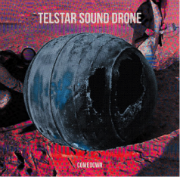
Home |
THE TELSTAR SOUND DRONE – COMEDOWN
(Vinyl LP and Download from Bad Afro Records www.badafro.dk )
Spacemen 3, Loop, Vibravoid. We could stop there and this would be the shortest and most perfunctory review in the long and illustrious history of the Terrascope and second only to Charles Shaar Murray’s glorious one word reviews of the early 70s.
However this would represent a supreme injustice towards an album (and indeed a band) which whilst heavily indebted to a particular brand of grinding, reverb-drenched psychedelia to which so many of us gladly subscribe, should in no way diminish the achievement of this Danish outfit’s debut long player and which is, to say the least, rather good. Actually, make that stunningly good.
Something of a side project for a couple of members of Baby Woodrose (ah yes, you can add that name to the list of influences), The Telstar Sound Drone comprises Hans Beck and Mads Saaby from the parent group plus Sean Jardenbaek who handles vocal duties as well a guitar. Moreover the BW’s bass player is one of the guest musicians supplementing the basic threesome. Musically it is as reassuringly good as you might expect in view of the impressive DNA. You know that when an album makes such an immediate and indelible impression (four listens in and its power and appeal is undiminished) and leaves you wanting more that the seven tracks spanning less than 40 minutes make for a perfectly balanced and an ideal length suite of compositions.
The impact of “Through the Back of your Head” is pretty much that, an insistent mid paced sonic attack of high intensity drug-drone, colours nailed firmly to the mast and through the centre of the mind. The single “Satellite” is a jauntier, more upbeat affair which you might imagine garnering some airplay from the cooler presenters of Radio 6 Music or whatever Denmark’s musical equivalent is - the almost soulful vibe accentuated by some Isley Brothers type fuzz guitar. This all feeds rather nicely into “Feels Like A Ride”, although it feels more like a cosmic trip of leisurely and sonorous quality. It is here that the band sound a bit less 80s noisenick and nod more in the trippier direction of Vibravoid which is no bad thing at all. Following the nicely spacey, laid back (semi-acoustic in fact) vibe of “Now See How”, matters receive a definite kick up the pants courtesy of some four to the floor drumming and some madcap flailing that transcends the more obvious influences and brings to mind the 13th Floor Elevators – the track is called “Evaporation” (rhymes with “Reverberation” don’t you know) and is worth the price of the album alone. It ends with some majestically melodic singe chords of such crystal clarity as to seem both cathartic and cleansing. The drummer gets his five minutes once more as he anchors the shimmering “Lost Our Love”, the underlying feel of which is not dissimilar from Monster Magnet’s “Ozium” whilst also reminiscent of Sun Dial at their very best. All of which then brings us to “Cabin Fever” the epic curtain closer that draws – or really that should be drawls – matters to a close. It’s simply as slow burner of epic and mind-bending quality that puts the mushroom tea cosy on as good a 34:12 of cosmic excess as you are likely to experience all year.
The Telstar Sound Drone have the right sound and in the right time and place and with a kick-ass light show they could also be the right band. Enjoy the ride.
(Ian Fraser) |
| |
|
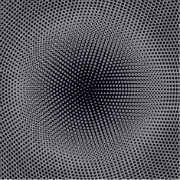
Home |
DEAD SEA APES / BLACK TEMPEST – THE SUN BEHIND THE SUN
(Vinyl LP from Cardinal Fuzz. http://cardinalfuzz.bigcartel.com/ )
Now I hate to come over as being too philosophical about these things but do you think it is possible to have too much of a good thing? For those of us who have ever experienced a touch of sunburn, indigestion or the occasional bacchanalian-induced night tremor the answer has to be yes. However does this apply to some of your favourite sounds? I’m not so sure the answer is clear cut and the only thing wrong with this neat and thoroughly welcome little collaboration is that until I’ve played it twenty or so times I’m not sure I’ll know the answer.
Ah c’mon (as a famous old Welsh band once sang) what is there not to love about a double header featuring the weird and wonderful kosmische vibe of Godalming’s Black Tempest (Stephen Bradbury) – soon to appear at Woolf_Music (see home page for details) - and Dead Sea Apes, who are way up there on the list of “Bands For Which We’d Save A Place In The Terrascope Lifeboat”?
The synergy between Bradbury’s hypnotic sequences and DSA’s gravitationally massive psychedelic film score was always going to be an irresistible proposition and so it proves. “Grey Alphabets” seeps slowly from the speakers and builds (and builds) almost along parallel lines to the extent that you may be forgiven for thinking that you simultaneously inhabit separate universes where two civilisations are intent on the same outcome by different means. The effect is profound and mesmeric and by Jove it works a treat! However this is a mere bagatelle compared with the other cut on side A, “Wilder Penfield”, in which the DSA are way heavier, sometimes crushingly so, mixing cruel shards of guitar with a powerful and insistent rhythm while Black Tempest is locked into a deeply meditative groove and imbibed by the spirit of Neu and Harmonia. This is quite simply brilliant and only equalled, possibly bested, by what is yet to come.
There are occasions when you cannot out do the press release and sometimes it just isn’t worth the bother of trying. Side B’s majestic side long “Heliopause” is a case in point, so we’ll had over to the press officer – who we suspect is probably none other than label boss Dave Cambridge also of Optical Sounds magazine – and who describes it “like Oneida and Tangerine Dream arguing over which is their favourite On-U Sound album”. It certainly sounds like a seismic collision between two immense ice monsters as controlled from a gargantuan celestial mixing desk. Dead Sea Apes in Dub has always seemed a tantalising prospect, this singular alliance of analogue and digital soundscapes has made it all a delicious reality.
Add to all of this a sleeve that messes with your mind and will have you down at Specsavers before you can scream “magic eye” and you have such a complete audio/visual experience that you’d never forgive yourself if you missed it.
Too much of a good thing? Not on your life!
(Ian Fraser) |
| |
|
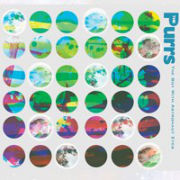 |
THE PURRS - THE BOY WITH THE ASTRONAUT EYES
(CD from www.finrecords.com)
Over seven albums, the Purrs have matured and expanded their sound, removing the accusations of Brit-Pop sound-a-likes, to become a powerful and dynamic band that push all the right buttons on their latest offering.
Opening with a blast of surf twang, “The Promises We made” sounds like The Stones meeting The Smithereens, a glorious backbeat anchoring the guitar and pushing the song along with energy and a garage sheen.
With a psychedelic/shoegaze feel, “You, The Medicine and Me” is a swirling delight, the voice of Jima sounding particularly suited to the song, whilst the guitar in the middle-eight has a Television vibe about it. Following on the last single “Rotting on the Vine” remains an energetic and angry tune, nicely fuzzed and brooding with menace.
More so than on any of their other albums, there is a sense of unity and purpose to the sound, the band finally cementing the identity that they have been searching for, something that means this is definitely their finest release so far, although personally I play them all on a regular basis.
after an exceptional opening trio, the pace slows for “The Fire Next Door”, a melodic song with a dark lyrical heart, typical of the band's songwriting style, light and shade blended together, the sweet guitar solo only adding to this duality. Evolving out of a cloud of distortion, “Cemetary Jonny” has a guitar sound that is dirty and almost lost in noise, giving the song a weird vibe, the whole track falling to pieces after a couple of minutes to be replaced by the power pop ball of energy that is “Cracked Head”, a song that deserves volume and lots of it.
Writhing with wah-guitar, “Fade Away” is a slow brooding track boosted by some female backing vocals courtesy of Liz Herrin, the song sounding like The Jesus and Mary Chain in melodic mode, the atmosphere perfectly captured by the production, something that is warm and sultry all the way through.
Coming on like a stoned love-song, “So Fucking Beautiful” is a sleazy tune inhabiting that twilight zone where The Stones jam with Primal Scream and one of the album's highlights, crank up the volume again and let it all flow over you. After the sleaze, “Your Favourite Colour” is the closest the band come to a ballad, although this one is about a break-up and drifts into Galaxie 500 territory, with chiming guitar and an underlying sense of anger.
To end, the appropriately named “Over and Out” is more power pop happiness, a sweet melody tinged with regret and fading optimism, the perfect ending to a near perfect guitar album, definitely the band's finest and definitely worth investigating. I imagine that these songs sound even better live, so if you are ever in Seattle go check 'em out and tell them I sent you. (Simon Lewis) |
| |
|
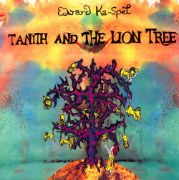
Home |
EDWARD KA-SPEL - TANITH AND THE LION TREE
(re-issue of 1991 album on Cold Spring)
My first review for Terrascope. I was given a list of artists and recordings to choose from. I went on-line to listen to some samples from each of the artists. I was unfamiliar with and didn’t care much for anything I heard. I thought, “What have I gotten myself into?” I also thought, “Well you asked for it – better pick a few.” So I did. I picked Ka-Spel not because I enjoyed what I had heard but because he had an extensive recording history and discography and I had at least heard of his band, The Legendary Pink Dots. My thinking was, “He’s been around a while, has fronted a semi-legendary band…maybe there’s more to him than what I’m getting from these You-Tube sound bytes”. That kind of thinking turned out to prove I’m a pretty smart guy, and my reward for that is this album.
I did not get Ka-Spel from listening to those individual and isolated tracks. If “Tanith…” is typical of his work I doubt anyone could. But this album works instead by hearkening back to the glory days of psychedelic records in that it is AN ALBUM, and not just a collection of songs. There are definitely a few good stand-alone tracks – “The Bakersman” springs to mind – but the real impact here is that of a collected work that hangs together as just that. I wouldn’t give a positive review to most of the tracks on this album – except in the context of how great they sound and work following their preceding tracks and preceding their following tracks.
I also quite enjoy the “everything including the kitchen sink” range of styles and sounds here. Musique concrete sits next to, or even morphs into, delicate psych-folk that is enhanced by space whooshes and whirls, all of it dancing around border-line Barret-isms (a comparison I’ve heard Ka-Spel dislikes…oh well.) Artists who try to go as many different places within one work as Ka-Spel does here do so at their own risk. What one ends up with is often a muddled mess with no focus or impact. But when it works, and it definitely works on this album, the pay-off for the listener is considerable.
I am an old fart. I remember ’66, ’67, ’68, buying a new album, lying on the floor in the dark in my bedroom listening to it from beginning to end, soaking in the experience of it as a whole, and thrilling to every unexpected twist, turn and sound. Thanks EKS. “Tanith and the Lion Tree” does a pretty fair job of recreating that experience. (Kim Draheim) |
| |
|
| |
|
| |
|
| |
|
|
 |
|

